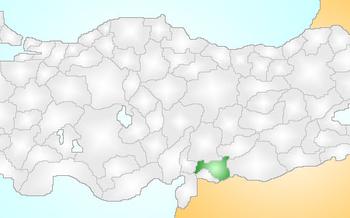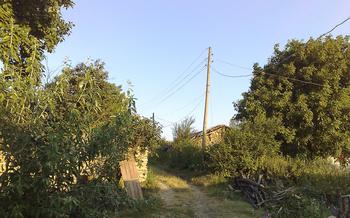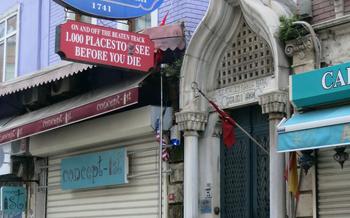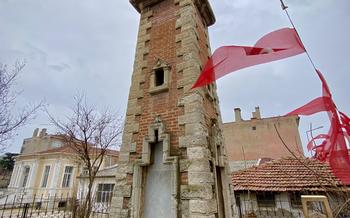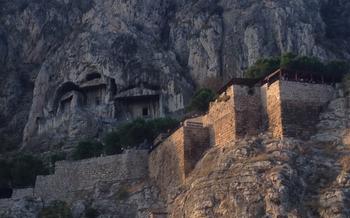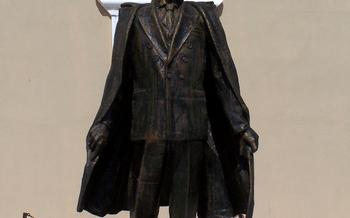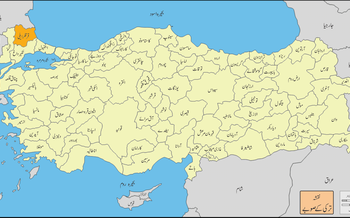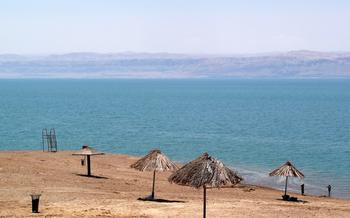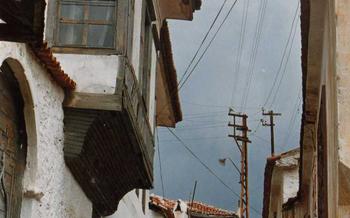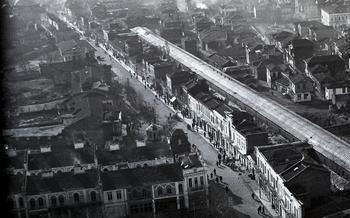
Kırklareli Historical Hamams
- Kırklareli’s Historical Hamams: A Legacy of Relaxation and History
- Hamam Etiquette: A Guide for the Uninitiated
- Çukur Hamam: The Gem of Kırklareli's Baths
- Yeni Hamam: A Modern Take on a Traditional Experience
- Historical Hamams Outside the City Center
- Hamam Treatments: A Journey to Relaxation and Wellness
- Hamams as a Cultural Experience: Unveiling Local Traditions
- Hamams for Families: A Fun and Educational Experience
- Hamams and Sustainability: Preserving a Cultural Legacy
- Insider Tip: Discover Hidden Gems Off the Beaten Path
Kırklareli’s Historical Hamams: A Legacy of Relaxation and History
In the heart of Kırklareli, a city steeped in history and tradition, lies a network of historical hamams that have stood the test of time. These hamams, or Turkish baths, are not just places of cleansing but also cultural landmarks that offer a unique and immersive experience for both locals and tourists alike.
The history of Turkish baths dates back to the Ottoman Empire, where they played a crucial role in social and cultural life. Hamams were not just places for bathing but also served as community centers where people from all walks of life could socialize, relax, and rejuvenate. This tradition continues to this day, as hamams remain an integral part of Turkish culture.
Kırklareli boasts several historical hamams, each with its own unique features and charm. These hamams have been meticulously preserved and restored, allowing visitors to step back in time and experience the authentic atmosphere of a traditional Turkish bath.
Visiting a hamam offers numerous benefits, both for locals and tourists. Hamams provide a place for relaxation and stress relief, as the warm steam and soothing massages help to ease tension and promote overall well-being. They also offer a deep cleanse, removing impurities from the skin and leaving you feeling refreshed and revitalized.
Whether you're a local looking to connect with your heritage or a tourist seeking a unique cultural experience, Kırklareli's historical hamams are a must-visit. Prepare to immerse yourself in a world of relaxation, history, and tradition as you step into these architectural wonders.
Hamam Etiquette: A Guide for the Uninitiated
As a visitor to a Turkish hamam, it is essential to be mindful of the local customs and etiquette to ensure a respectful and enjoyable experience for everyone. Here are some guidelines to follow:
-
Dress and Undress Appropriately: Before entering the bathing area, undress completely and leave your clothes in the designated changing room. Wrap yourself in a pestemal, a traditional Turkish towel, to cover your body.
-
Respect Privacy: Hamams are typically divided into separate sections for men and women. Be mindful of your surroundings and maintain a respectful distance from others, especially those of the opposite sex. Avoid staring or making inappropriate comments.
-
Navigate the Sections: A typical hamam has three main sections: the sıcaklık (hot room), the soğukluk (cold room), and the dinlenme odası (relaxation room). Start by entering the sıcaklık, where you can sweat and cleanse your body. Then, move to the soğukluk to cool down and rinse off. Finally, relax in the dinlenme odası, where you can enjoy a massage or simply unwind.
-
Avoid Common Faux Pas: Some common mistakes to avoid include talking loudly, using your mobile phone, or bringing food and drinks into the bathing area. Remember that hamams are places of relaxation and tranquility, so be considerate of other bathers.
Çukur Hamam: The Gem of Kırklareli's Baths
Among Kırklareli's historical hamams, Çukur Hamam stands out as a true gem, captivating visitors with its architectural splendor and rich cultural significance. Built in the 15th century, this hamam boasts a remarkable dome that has become an iconic landmark of the city. The intricate tilework adorning its walls and floors adds to its visual charm, transporting visitors back in time.
Beyond its architectural beauty, Çukur Hamam holds a special place in the hearts of the local community. It has served as a social and cultural hub for centuries, where people from all walks of life gather to bathe, relax, and socialize. The hamam's spacious layout, with separate sections for men and women, allows for a communal bathing experience that fosters a sense of camaraderie and belonging.
Personal anecdotes from visitors who have experienced Çukur Hamam often highlight the warm hospitality and welcoming atmosphere that permeates the establishment. The friendly staff, knowledgeable in the art of traditional bathing rituals, ensures that every visitor feels comfortable and well-cared for. Whether you are a first-time visitor or a seasoned hamam enthusiast, Çukur Hamam promises an unforgettable experience that will leave you feeling refreshed, rejuvenated, and deeply connected to the local culture.
To find Çukur Hamam, simply head to the heart of Kırklareli's old town and look for the impressive dome that rises above the surrounding buildings. The hamam is conveniently located within walking distance of other historical landmarks, making it easy to incorporate a visit into your exploration of the city. Whether you choose to visit during the day to bask in the natural light filtering through the dome or in the evening to enjoy the atmospheric glow of the lanterns, Çukur Hamam is sure to leave a lasting impression.
Yeni Hamam: A Modern Take on a Traditional Experience
Yeni Hamam is a relatively new addition to Kırklareli's historical hamams, having been built in the early 20th century. Despite its modern construction, Yeni Hamam seamlessly blends traditional elements with contemporary design, creating a unique and inviting space. The hamam's most striking feature is its stunning marble interior, which exudes a sense of luxury and elegance. In contrast to the traditional communal bathing areas found in other hamams, Yeni Hamam offers private bathing cubicles, ensuring privacy and comfort for its guests.
Yeni Hamam is a popular choice among both locals and tourists, who appreciate its modern amenities and high standards of service. The hamam is particularly renowned for its skilled masseurs, who provide a variety of treatments designed to promote relaxation and well-being. Yeni Hamam also plays a vital role in promoting Kırklareli's cultural heritage by preserving and showcasing traditional bathing practices in a modern context.
Practical Information
- Entrance Fee: 50 TL for locals, 100 TL for tourists
- Opening Hours: 8 am to 10 pm, daily
- Services Offered: Traditional bathing rituals, kese, köpük, and oil massages, body scrubs, and facials
- Booking: Reservations are recommended, especially during peak season
- Insider Tip: Ask about the hamam's special packages, which often include a combination of treatments at a discounted price.
Historical Hamams Outside the City Center
Beyond the city center of Kırklareli, the province is home to a treasure trove of historical hamams, each with its unique characteristics and historical significance. These hamams offer a glimpse into the rich cultural heritage of the region and provide an authentic experience for travelers seeking a deeper connection with local traditions.
One notable hamam is Bademli Hamam in the town of Kofçaz. This 16th-century hamam is renowned for its stunning architecture, featuring intricate tilework and a magnificent dome. The hamam has been lovingly restored and continues to serve as a popular gathering place for locals.
Another must-visit hamam is Çilingir Hamam in the village of Pınarhisar. Built in the 18th century, this hamam is distinguished by its impressive size and well-preserved interior. Visitors can admire the original marble basins, vaulted ceilings, and traditional Turkish motifs that adorn the walls.
For those seeking a more rustic experience, Dereköy Hamamı in the village of Dereköy is a hidden gem. This charming hamam dates back to the Ottoman era and has retained its original features, including a wood-fired heating system and a communal bathing area.
To access these hamams, travelers can rent a car or take local transportation. Combining a visit to these historical hamams with other nearby attractions, such as ancient ruins, natural landscapes, and traditional villages, creates a comprehensive and enriching travel experience.
Hamam Treatments: A Journey to Relaxation and Wellness
Hamams offer a range of treatments and massages that promise to rejuvenate the body and mind. The kese is a traditional body scrub that removes dead skin cells and impurities, leaving the skin feeling soft and smooth. The köpük is a luxurious foam massage that envelops the body in a cloud of bubbles, providing deep relaxation and cleansing. Oil massages are also available, using scented oils to soothe the muscles and promote overall well-being.
These treatments offer a host of health benefits, including improved circulation, detoxification, and stress reduction. The heat and humidity of the hamam help to open up the pores, allowing the body to release toxins and impurities. The massages stimulate blood flow, easing muscle tension and promoting relaxation. The overall experience of a hamam treatment is one of deep cleansing, rejuvenation, and tranquility.
When choosing a treatment, it is important to consider your individual needs and preferences. If you have sensitive skin, you may want to opt for a gentler scrub, such as a kese made from natural fibers. If you are looking for a more intense cleansing experience, you may prefer a kese made from horsehair or loofah. For those with specific muscle tension or pain, an oil massage can be a great option to target and relieve those areas.
To ensure a personalized and enjoyable experience, it is helpful to communicate your preferences to the hamam staff. Let them know if you have any allergies or skin sensitivities, and if there are any specific areas you would like them to focus on. The staff is trained to accommodate your needs and provide the best possible treatment.
Hamams as a Cultural Experience: Unveiling Local Traditions
Hamams hold a significant place in Turkish culture and society, extending beyond their function as mere bathing facilities. They serve as communal spaces where individuals from all walks of life come together to unwind, socialize, and embrace traditional practices. Visiting a hamam offers a unique opportunity to immerse oneself in Turkish customs and gain insights into the local way of life.
One of the most striking aspects of hamam culture is the emphasis on respect and consideration for others. Upon entering the hamam, it is customary to remove one's shoes and cover up with a peştemal, a traditional Turkish towel. This practice ensures privacy and modesty, fostering a sense of equality among bathers.
In the hamam, bathers often engage in lively conversations, sharing stories, exchanging advice, and discussing current events. This social interaction is an integral part of the hamam experience, providing a platform for community members to connect and strengthen their bonds.
Hamams also play a significant role in religious rituals and celebrations. During the holy month of Ramadan, for instance, many Muslims visit the hamam to cleanse themselves before offering their prayers. Similarly, hamams are popular destinations for pre-wedding bathing ceremonies, where brides and grooms undergo elaborate bathing rituals to prepare for their special day.
By experiencing a hamam, visitors can gain a deeper understanding of Turkish culture and traditions. The unique atmosphere, etiquette, and customs associated with hamams provide a glimpse into the rich tapestry of Turkish society, leaving a lasting impression on those who seek authentic cultural experiences.
Hamams for Families: A Fun and Educational Experience
Hamams are not just for adults; they are also a great place for families to relax and bond. The warm, humid environment is soothing for children, and the different pools and showers provide plenty of opportunities for play. Many hamams also offer family-friendly amenities, such as changing rooms, lockers, and towels.
In addition to being a fun place to relax, hamams can also be a great educational experience for children. They can learn about Turkish culture and history, and they can also learn about the importance of cleanliness and hygiene. Hamams are a great way for families to spend time together and create lasting memories.
Here are some tips for making the most of your hamam experience as a family:
- Choose a hamam that is family-friendly. Look for hamams that have changing rooms, lockers, and towels for children.
- Bring your own bathing suits and towels if possible. This will help you save money and avoid having to rent them from the hamam.
- Be sure to supervise your children at all times. The hamam can be a slippery and dangerous place, so it is important to keep an eye on your children to make sure they are safe.
- Encourage your children to explore the different pools and showers. Hamams are a great place for kids to play and learn.
- Teach your children about Turkish culture and history. Explain to them the importance of cleanliness and hygiene in Turkish culture, and tell them about the history of hamams.
- Make sure to drink plenty of water before, during, and after your hamam experience. This will help you stay hydrated and avoid getting dizzy.
- Relax and enjoy your time together. Hamams are a great place to relax and bond as a family.
Hamams and Sustainability: Preserving a Cultural Legacy
In an era where sustainability is at the forefront of global concerns, hamams are actively embracing eco-friendly practices to reduce their environmental impact. Many hamams have implemented water conservation measures, such as using low-flow faucets and recycling wastewater for irrigation. Additionally, they are transitioning to energy-efficient lighting and heating systems to minimize energy consumption.
The use of eco-friendly products is another key aspect of sustainable hamam operations. Natural soaps made with olive oil, honey, and other plant-based ingredients are replacing harsh chemicals, reducing water pollution. Biodegradable materials, such as loofahs and cotton towels, are also being used to minimize waste.
As travelers, we can contribute to the sustainability of hamams by making conscious choices. Opting for hamams that prioritize sustainability, using biodegradable products, and conserving water and energy are all ways we can support responsible businesses. By embracing sustainable practices, hamams can continue to thrive as cultural landmarks while preserving the environment for future generations.
Insider Tip: Discover Hidden Gems Off the Beaten Path
Venture beyond the well-known hamams in Kırklareli city center to discover hidden gems that offer a more authentic and immersive experience. These lesser-known hamams are frequented by locals, providing a glimpse into the true essence of Turkish bathing culture. In smaller towns and villages, the pace of life is slower, and traditions are more deeply rooted, allowing you to connect with the local community and gain a deeper understanding of their way of life.
Seek out hamams in charming villages nestled amidst rolling hills or by the tranquil shores of the Black Sea. These hidden gems often boast unique architectural features, such as intricate tilework, grand domes, and beautifully preserved interiors. The atmosphere is more intimate and personal, with friendly locals eager to share stories and traditions.
To find these hidden gems, ask for recommendations from locals, explore online forums and travel blogs, or simply wander off the beaten path. The reward is an unforgettable experience in a hamam that has remained untouched by the tourist crowds, where you can truly immerse yourself in the local bathing culture and create lasting memories.
